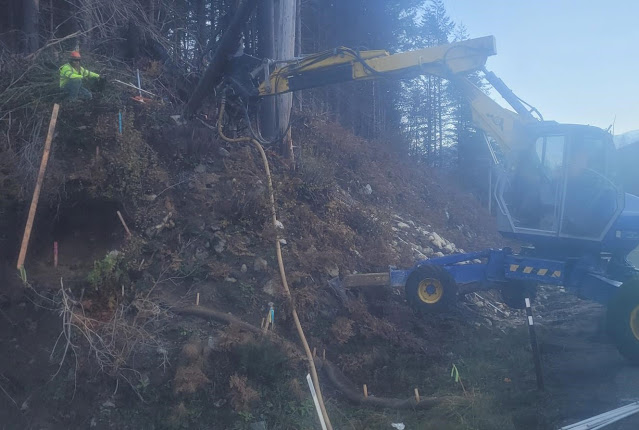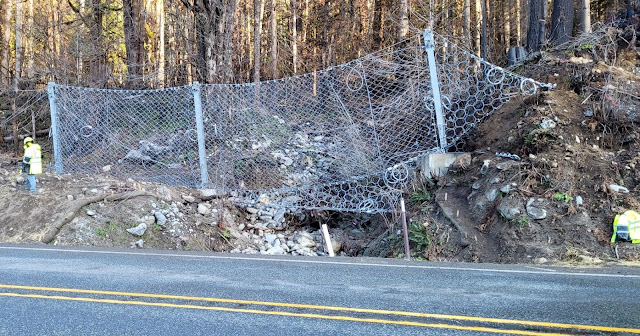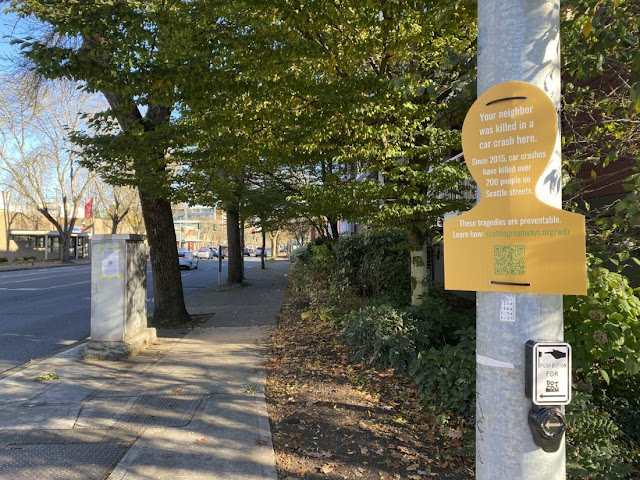By David Rasbach
The 2022 Bolt Creek Fire burned nearly 15,000 acres in the Mount Baker-Snoqualmie National Forest. We had to close US 2 east of Gold Bar several times because of the active fire and debris falling onto the highway. The fire also left a burn scar that will take several years to recover.
Even after the fire, there is still a chance that debris, such as rocks and mud, might flow down from the Bolt Creek Fire burn scar. But we have good news! We just finished a project that will make it less likely for debris flows to block travel along US 2/Stevens Pass Highway.
Burn scars and debris flows
Wildfires can change the landscape, turning dense trees and vegetation into large areas with ashes and dry soil, known as burn scars.
If it rains a lot or snow on the ground melts really fast, these burn scars can produce fast-moving landslides called debris flows. These can be dangerous and might harm people and property within their path.
After the Bolt Creek wildfire, our geotechs studied the area and found two areas near the burn scar, about four miles northwest of Skykomish, where there is a higher risk of debris flows that could affect US 2.
Protecting the road: culverts and berms
In one of these areas, there are two culverts under US 2 that might get clogged if debris flows down the stream.
If the culverts clog, water, rocks and even trees could spill across the highway, forcing us to close it to clean up and maybe fix the guardrails and pavement.
To reduce this risk, we built two debris fences – one 60 feet long and the other 110 feet long – above each culvert. These fences should help stop some of the debris that reaches the culverts if a debris flow happens.
 |
| Debris fences were installed along the stream channels above two culverts under US 2 to help reduce the chances a debris flow could clog the culvert. |
 |
| Crews pour a post foundation for a new debris fence along US 2. |
 |
| Work crews drill holes where anchors for posts that will support a debris fence along US 2 will be installed. |
 |
| Crews begin hanging a new debris fence along US 2 near Skykomish. |
 |
| The project installed two debris fences above culverts that run under US 2. |
A few hundred feet up the highway, our geotechs identified a second area where a debris flow could slide across US 2.
In this area, our experts thought it would be a good idea to build a 6-foot-tall wall, called a berm, made of natural materials. This berm will guide any potential debris flows away from US 2 to a lower natural “catch” area near the highway. The berm is 94 feet long and required nearly 300 tons of material to build.
 |
| Crews began compacting soil that will make up an earth berm that will help protect US 2 from a potential debris flow from the Bolt Creek Fire burn scar. |
 |
| The completed earthen berm stands 6 feet tall and is 94 feet long. It will help protect US 2 in the event of a debris flow in the area, channeling the flow to a natural lower “catch” area. |
 |
| An erosion blanket is placed atop the new earthen berm. The berm will help direct a potential debris flow in the area away from US 2. |
 |
| The completed earthen berm stands 6 feet tall and is 94 feet long. It will help protect US 2 in the event of a debris flow in the area, channeling the flow to a natural lower “catch” area. |
Finishing up work
In order to get all of this work done, we had to make some changes to the traffic on US 2, but most of the work is done now. In spring 2024, we’ll add native plant seeds to help stabilize the area, but we won’t need any lane closures for that work.
Our maintenance crews will keep an eye on the highway along the burn scar, looking for downed trees and limbs, clearing ditches and culverts and looking for any early warning signs of a potential debris flow.
Hopefully, the berm and the fences are never tested by a debris flow, but Mother Nature is uncontrollable. What we can control is that we have taken the necessary steps to reduce the risk and keep US 2 open while the area recovers from the Bolt Creek Fire.






































